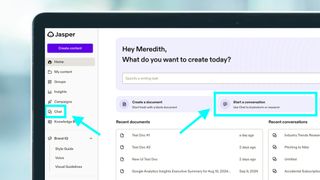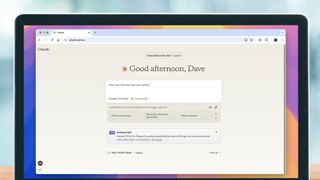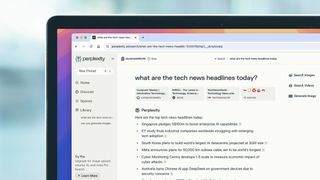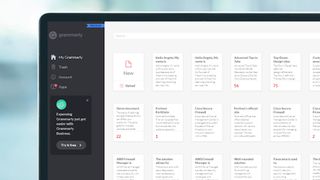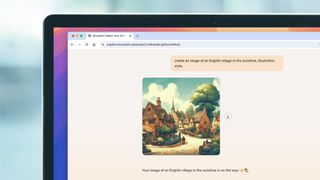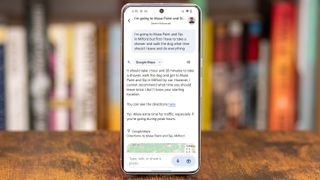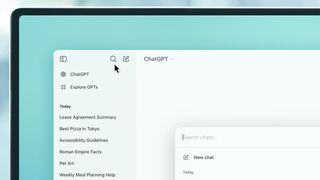- A new Future survey reveals the most popular AI tools we’re using
- ChatGPT remains the most popular AI tool, but its lead is relatively slender
- Rivals like Google Gemini are catching – as other research confirms
Artificial intelligence tools are transforming the way we work and create, but which apps are proving most popular right now? A survey run by Future Publishing (the owner of TechRadar) covering hundreds of tech consumers in the US and the UK shows AI use is increasing – and reveals the tools we’re turning to the most often.
There are some familiar names in these results, but also some up-and-coming challengers in the AI space – showing there are more of these apps than ever, all ready and willing to lend a hand with writing text, creating images, searching files, and more. AI has never been more ubiquitous, and the trend is only going one way.
More AI survey results
Here are the 12 most popular AI tools right now, in reverse order. You may spot some you’re already using, and some you feel you should be using. Both US and UK participants were quizzed at two points during 2024, to track changing use over time. Let’s dive in…
10. DreamStudio, Midjourney, Stable Diffusion (joint)
- DreamStudio (used by 10% of US survey respondents, 7% in the UK)
- Midjourney (used by 10% in the US, 7% in the UK)
- Stable Diffusion (used by 10% in the US, 7% in the UK)
It’s a three-way tie for 10th place, with DreamStudio (images), Midjourney (images), and Stable Diffusion (images, video, and audio) all used by 8.5% of our respondents (on average). They all offer speedy, prompt-based content generation for a wide variety of purposes.
All three are on the up, too – with growth of 88% for Dream Studio, 59% for Midjourney, and 43% for Stable Diffusion in the months between our two survey snapshots. They’re also all paid-for tools, with no free tiers available.
9. Jasper
- Used by 10% of US survey respondents, 7% in the UK
In 9th place, and used by 9% of the people we quizzed on average, there’s Jasper. Jasper offers a range of AI services for marketers, so there’s everything from chatbots to image generators to trend analysis – for a fee (though you can get a free trial).
Jasper wasn’t included in the first survey round, so we can’t tell you how much its usage numbers have grown over the course of the last year, but the data shows it’s slightly more popular in the US than the UK.
8. DALL-E
- Used by 12% of US survey respondents, 7% in the UK
Up to 8th now, and we have DALL-E, used by 9.5% of respondents: the AI image generator is owned and developed by OpenAI, and is now only available inside the ChatGPT interface for free users and subscribers (who get differing levels of access).
Type out a prompt, and DALL-E gives you an image – and you can even make edits afterwards. It’s used by 12% of people in the US, and 7% of people in the UK, with usage growing an impressive 47.5% between our two survey points.
7. Claude
- Used by 11% of US survey respondents, 9% in the UK
Claude comes in 7th in our results. The AI chatbot can help you brainstorm ideas, produce visuals, create schedules, and work with documents and images. It does have a free plan, though you get a lot more features if you subscribe.
For example, you get a choice of models to pick from when using Claude, though some are exclusive to paying members. Like Jasper, Claude wasn’t included as an option in our first survey snapshot, but is a little more widely used in the US compared to the UK.
6. Perplexity
- Used by 12% of US survey respondents, 9% in the UK
With an average of 11% of our survey participants using it, Perplexity is in 6th place: a chatbot that can generate text, analyze documents, search the web and more, with both free and paid-for plans available. It’s also recently launched a Deep Research tool.
It’s also noticeable for letting you run models from other companies inside its interface. We don’t have figures for usage over time when it comes to Perplexity, but it is slightly more popular in the US than the UK – 12% vs 9%.
5. Image Creator from Microsoft Designer
- Used by 14% of US survey respondents, 9% in the UK
Into our top five, and in 5th place we’ve got Image Creator from Microsoft Designer. As you can tell from the name, it’s an AI-powered graphic design tool inside the larger Microsoft Designer app, and it’s used by an average of 11.5% of our survey participants.
Used by 14% of US respondents and 9% of UK respondents, it’s clear a lot of visuals are being churned out by Image Creator – usage is also up 29% over the course of our survey period. You can use it for free, and pay for additional image generation credits.
4. Grammarly
- Used by 24% of US survey respondents, 16% in the UK
You might not have expected to see Grammarly on this list, but the writing checker has rolled out a host of AI features in recent times, and it’s in 4th place with an average usage level of 20%. You can use it for free, though a Pro account gives you more AI access.
Grammarly‘s main focus is on text, whether it’s generating it from scratch, rewriting what you’ve already written, or checking for mistakes. It’s used by 24% of people in the US and 16% of people in the UK, with a small 3.5% level of growth over the course of the survey.
3. Microsoft Copilot
- Used by 23% of US survey respondents, 17% in the UK
You can’t have failed to notice Microsoft Copilot trying to find its way into every single Microsoft product in recent times – Microsoft is really, really keen for people to use it, and it averages 20% in terms of those in our survey who are using it, putting it in 3rd place.
Copilot can be used to generate text, think through problems, come up with ideas, create images, search the web, and more, with extra features for paying users. Usage is up 64% across last year, with 23% of US users and 17% of UK users regularly logging in.
2. Google Gemini
- Used by 27% of US survey respondents, 18% in the UK
Our 2nd place spot goes to one of the more familiar names in AI apps, Google Gemini. Across the US and UK, 22.5% of people are using it (27% in the US and 18% in the UK), and Gemini grew its userbase by a whopping 97% over our survey period. We weren’t the only survey to discover this trend, as you can see further down this page.
Gemini is a multimodal AI app that can deal in text, audio, images, and documents, and Google isn’t slowing down when it comes to adding new features. There is a free tier, but paying users get more advanced models and tools.
1. ChatGPT
- Used by 39% of US survey respondents, 35% in the UK
The competition may be gaining on it, but ChatGPT is still out in front as the most used AI tool – with an average of 37% of users we surveyed now making use of it (that’s 39% in the US and 35% in the UK). Growth was 7% over the course of our study period.
ChatGPT is the multimodal bot that’s mainly responsible for kickstarting the generative AI revolution: it can produce text and images, analyze documents, and search the web, plus it sounds like there’s much more to come too.
Those results in full…
Here’s a graph showing those results from our AI survey, where ChatGPT remains on top, but perhaps not as far ahead of its rivals as you might expect…
Our results also chime with some other recent research on the subject. Ben Wood, Chief Analyst at CCS Insight, told us: “At CCS Insight we’ve noted similar findings when it comes to the most popular AI services. ChatGPT leads with 39% of Brits telling us that they have used the service, with that number being even higher in the US, where we recorded that 42% of consumers have interacted with the platform,” he said.
“Google’s Gemini is lagging ChatGPT, but we are seeing engagement growing. Awareness is also extremely high for both services, reaching over 80% in the UK and US for ChatGPT. In the US, awareness of Gemini is only fractionally behind ChatGPT at 73% while in the UK it has reached 69%,” he added.
The race for the title of best AI tool is only just getting started, then – and it’s clear why OpenAI, Google and Microsoft are all keen to add new features on a seemingly weekly basis. It’ll be fascinating to see what this chart looks like in a year and beyond.



